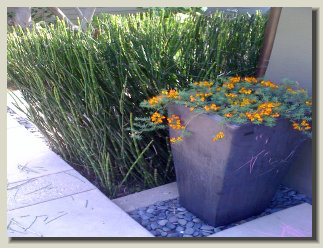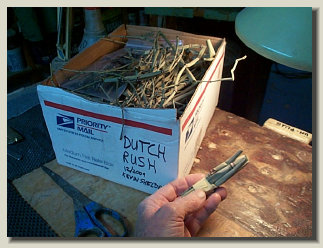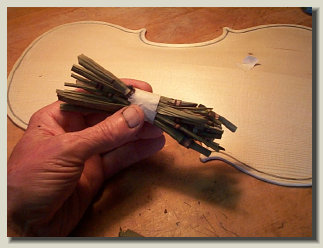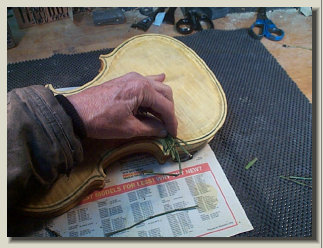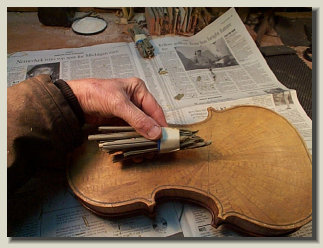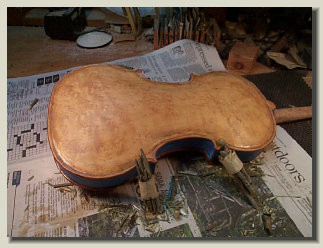(revised 10/2020)
Page G_07
Dutch Rush used as Varnish Ground Layer in Violin Making...
..I had read that in the 'olden days', before sandpaper, the wood workers used dutch rush (harvested nearby) to scrub the wood as the final wood surface finishing step.
..I thought I would give it a try. I asked by brother in law where I could get some and he told me his son in California had some growing in his back yard! A phone call later and my cousin sent me a box full which I received within a week! {Thank you Kevin S.}
.. Ask around as it can grow by the side of the road, on the banks of a ditch, near a stream, or in a dark low area by a hiking trail. Or, just order some off the internet and grow your own in your back yard (which I also did).
..Cut a small handful and tape it in the middle with masking tape. We will be using both ends of bundel. Perhaps three bundles like this are necessary for a complete violin for each of two applications, which are necessary for maximum acoustical effects; for a total of approximately six bundles.
..Scrub it into the surface with a circular motion and light pressure, perhaps going over each area several times for each application. As the material wears away, keep turning the bundle in your hand, then switch ends.
..The surface develops a waxy feel, which I believe is permanent. It also provides excellent adhesion for the coming varnish coats and really helps bring out the grain of the wood.
..Compare the acoustical effect by tapping the wood just dutch rushed compared to an area not done yet to really hear the developing effect.
..The dutch rush is like a hollow soda straw with fine spines on the outside diameter. The plant draws minerals form the soil including silica and stores them in these ribs, which in turn act as a very fine sand paper.
..The superior sound improvement is a bonus.
(c) 2020 by David Langsather
.The best acoustical ground layer I have discovered so far is: Hematite Burnishing with the wood grain, twice; Then Dutch Rush sanding with the wood grain, twice; Followed by two coats of varnish/ Fullers Earth mixture then the final two coats of varnish. These lower the strength of the upper overtones of sound produced and strengthen the lower overtones [approximately below 2300 HZ].
..To prevent scratches from showing, especially on the top plate, perhaps rubbing (sanding) in the direction of the wood grain is a better idea. Also avoid possible deeper scratches from the ribbed area of the dutch rush when nearing last coating of dutch rush.


